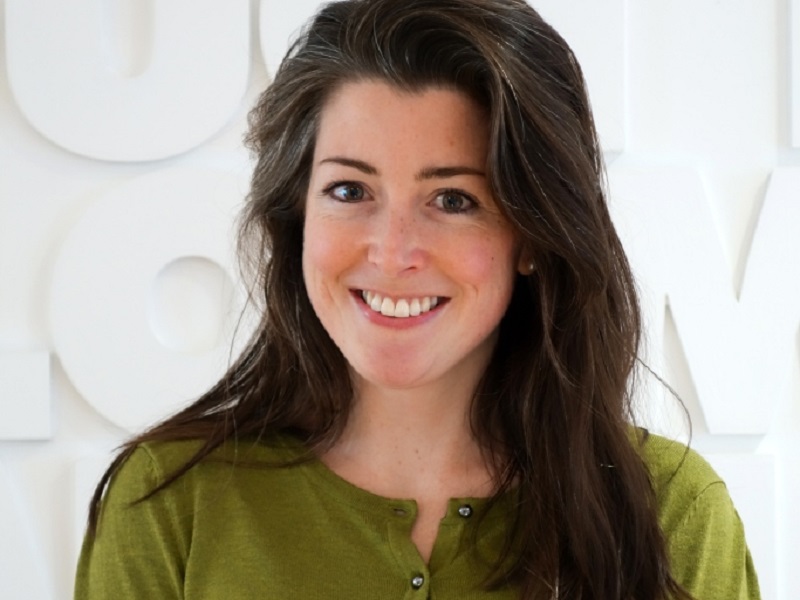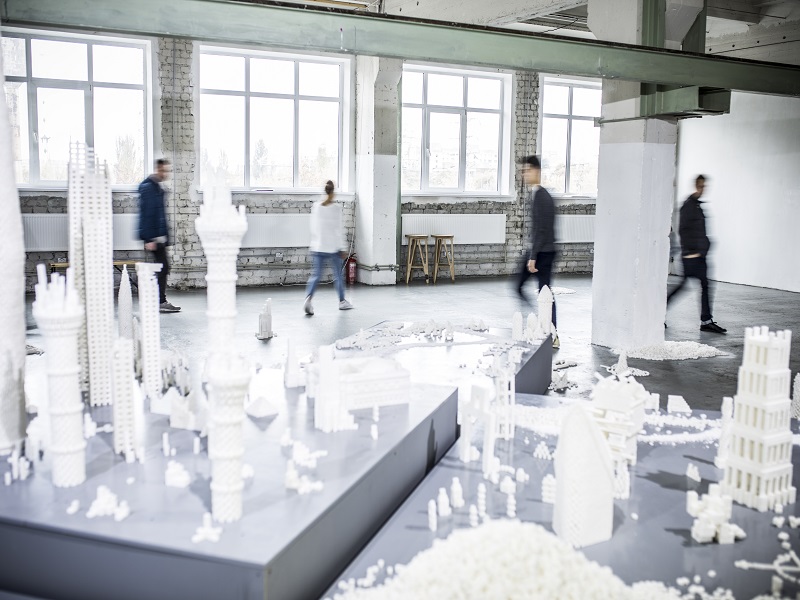
KINDNESS, AUTHENTICITY AND ENERGY: THE THREE SECRET POWERS OF ENTREPRENEURSHIP
Audio version of conversation you can find here.
Why did you choose to work in the creative sector?
When Clare was leaving university, her advisor told her: “If you’re thirty and still don’t know what to do with your life, don’t worry.” Advice that Clare has found useful, claiming: “My career has gone something like that…I’ve never known exactly what I’d like to do. I just knew that I wanted to work in the cultural sector.”
She started off in fundraising and moving on from there to festival organization where she helped develop a science Festival. “I was looking at science from the perspective of arts and culture and I understood that I enjoyed working in areas that didn’t fit in the usual boxes. That led me to Watershed.”
What is Watershed exactly and what projects that you’ve been involved with bring you particular satisfaction? At Watershed, Clare excels at cross-disciplinary projects, and seeing what comes of cross-pollination among creative sectors. Her favourites?
“First, let’s give you some idea of what Watershed does. We’re a 40-year-old organization based in Bristol. We promote cultural cinema, so we’ve got three cinema screens and digital creativity – and have a research lab called Pervasive Media Studio that we set up ten years ago to support work where art and technology intersect. Prior to opening it, when a project reached its end the people we brought together and the capacity they developed would ebb away. So, we put together the lab to be able to continue to support our community, provide them with a permanent home. We gift the space to those we work with, and in return we ask them to be generous with their ideas. Our alumni work all over the world. One of the companies we worked has now been bought by Ninatic – the company behind Pokemon Go!”
As Clare describes it, the Pervasive Media Studio at Watershed keeps art at the heart of its creative output. The Studio’s work is led by artists and results in cutting edge innovation in both the products and services it generates as well as an engaged approach to audience experience. By giving priority to the social and cultural impact of an innovation they’ve established their commitment to more than just the marketplace.
“One project out of our lab is the Playable City project. Smart cities are all about efficiency, using technologies to get somewhere quicker with less hassle. This is something that really concerns people. They’re afraid of becoming isolated, getting disconnected from real people in real spaces. So with Playable City we started to use playfulness and art to connect people using smart city technologies – a project we’ve implemented all over the world, from Brazil to Lagos. We hacked those technologies to use them for good.”
Another project, called Shadowing, prompts the person who encounters it to think about the data traces that they’re leaving behind in a city and to encourage them to engage in a more playful relationship with life in a bustling urban setting. The set-up is simple enough: Shadowing hacks common streetlights so that when you walk beneath one it records your body’s movement and projects your shadow, inviting you to dance with your own shadow.
We asked about the challenges facing those who work in the cultural and creative sectors, whether artists or managers, and the tools they need to meet them.
“In many places in the world there is still a distinction between commerce and culture and we think that is false distinction. We want to work with artists and creatives to build up the value. We’re finding ways to provide business support for artists interested in social impact.”
Clare insists that if Watershed were interested purely in profits that there are any number of projects they could sell to well-heeled Silicon Valley tech investors. But not everything is about ‘job creation’ or wealth accumulation. The group is looking for new ways to measure value, and for ways to add diversity – racial, social and gender – to the creative sector, giving it a more inclusive environment than it has had traditionally.
Can you give an example of the best practice of successful creative concept development?
”We make a distinction between invention and innovation. It’s not articulated everywhere, but we see invention as an early stage of innovation. We don’t know where it will go, so our job at Pervasive Media Studio is to support people who have these ideas so they can test them out quickly.
Innovation itself is about how you scale, quantify and grow an idea. It’s identifying a system that allows to be spread around the country or around the world.”
To make that leap in innovation, Clare recommends that creative entrepreneurs find a creative hub and to attach themselves to that place, working in concert with others taking a similar approach. The creative exchange that takes place there, the feedback, and ultimately, the links to finding investors in an idea, is invaluable. No hub available? Go online!
What value do you see in developing entrepreneurial skills among university students?
“I think it’s a great tool to help them understand how to collaborate. Society is facing pretty tricky problems around things like climate change, social inequality. To be able to challenge those problems we need young people who are equipped to think differently, collaborate and to make international partnerships. Young people equipped like that—and we are ready to support them at Watershed to help them—they’ll produce meaningful change in any nation’s economy.”

How does the Creative Spark Programme of the British Council fit into this scenario?
“Creative Spark is about equipping young people with the creative entrepreneurial skills to develop their ideas. People can talk across national boundaries and can learn to articulate their business ideas before an international audience. It is also about giving people actual business skills. So, they can think about how to make their ideas a reality and also work in teams to come up with really innovative ideas. It’s great to see Creative Spark working in universities in Ukraine, South Caucasus and Central Asia countries.”
The concept of intellectual property is important to the creative industries. Is this in any way conflictual with the idea of a creative commons, or do the two complement one another?
“The spectrum of intellectual property options available to the creative industries can be very confusing. Most of creative organisations, startups and companies we work with use some creative commons code in their projects. A practice that allows the world of coding to make great leaps forward and create basic building blocks which can be built upon.
Of course, protecting intellectual property enables you to exploit your products and to make money of them. In the UK in general, and at Watershed, we believe in a role of creative producer. This is someone who has both a curatorial and project-minded view to ensure that people are testing and marketing their projects properly, that they’re thinking about effects.”
And Ms. Reddington’s message is consistent: That creative potential is directly tied to entrepreneurs possessing a solid grasp of business models and intellectual property. A requirement that becomes especially relevant when a creative is thinking about a project intended to bridge cultures, societies and creative disciplines. This approach has not gone unrecognized in the professional creative sector.
You have been nominated for a WOW - Women in Creative Industries Award 2018 in the ‘Breaking New Ground’ award category. Could you address the current environment for women working in what has traditionally been a male-dominated sector?
”Representing leadership from a female point of viewis a very important part of my job. I am emotionally honest. If something at work upsets me, I think that is my responsibility to share that and articulate that. And to show my colleagues that it is normal to bring their whole identities to work. It’s not just about being ‘a bos’s. Working in partnership with institutions like universities can be really difficult because there are a lot of invisible power structures to fight to establish your legitimacy. So what we try to do is to be inclusive and welcoming and as equal as possible.
By building a profile within the cultural community. Lots of women feel comfortable to come and work at Pervasive Media Studio. We have about 52 % participation from people who identify as women. Something you won’t find in a typical technology incubator.”
Finally, Clare has some advice for beginners. It’s a simple, intuitive list:
- Be kind to people and to yourself. In the world of social capital, kindness will make everyone’s day better.
- Be authentic, especially on the Internet. People can sniff out phoniness very quickly.
- Be an authentic version of yourself, state your opinions and your ideas. They are valuable. People want to hear them especially if they are different.
- Be energetic. This is not easy. Some people are naturally confident, but I think energy is about passion. When you are passionate, people also become passionate about the things that you do.
Kindness, authenticity, and energy. So, simple and so welcome in an increasingly complex world. Our thanks to Clare Reddington for this encouraging look at the world of creative entrepreneurship.




